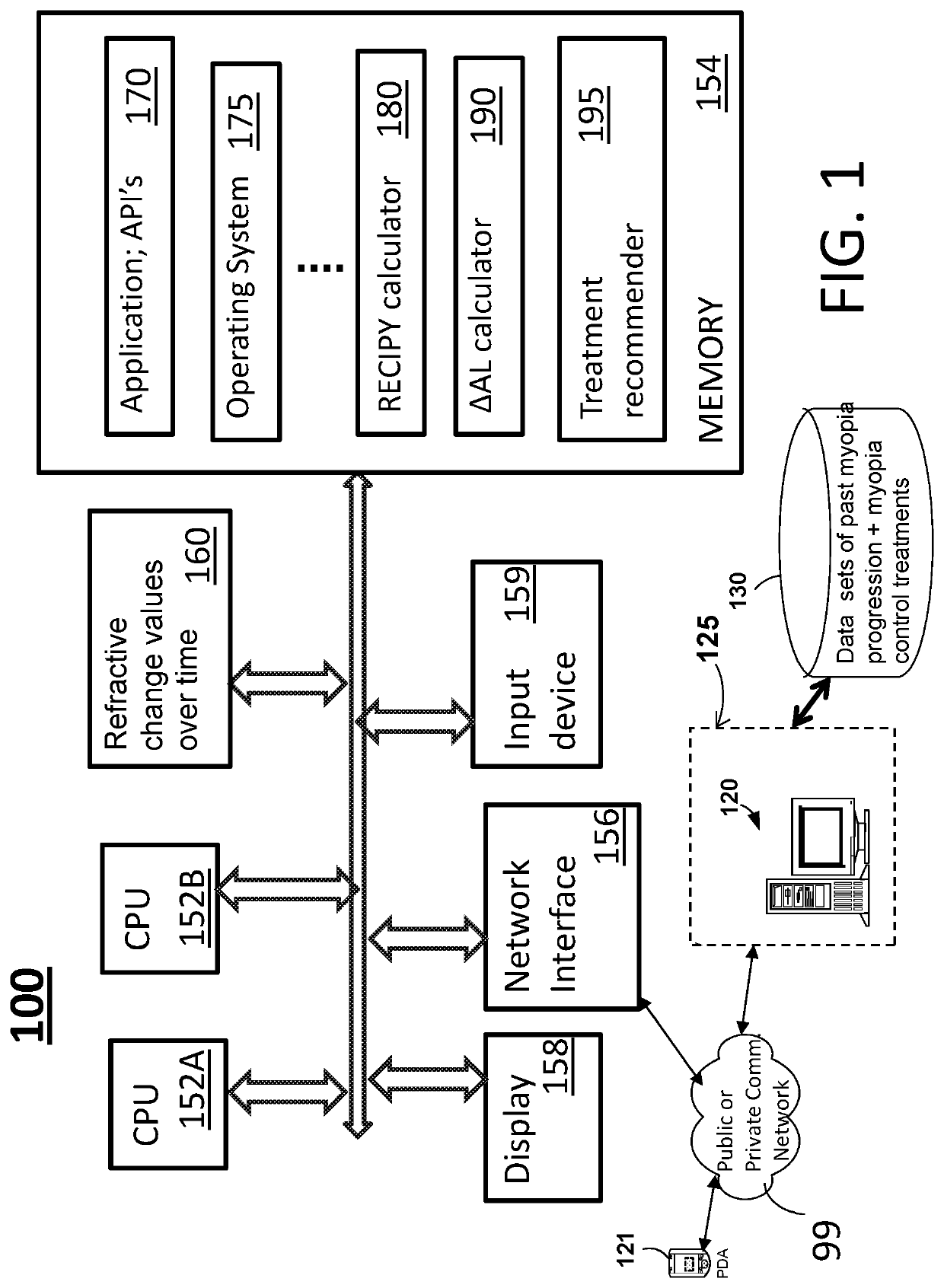Ametropia treatment tracking methods and system
a tracking method and treatment technology, applied in the field of ametropia treatment tracking methods and systems, can solve the problems of hyperopia, excessive eye growth, and eye growth that is not long enough, and achieve the effects of preventing and/or controlling myopia, and detecting excessive eye growth
- Summary
- Abstract
- Description
- Claims
- Application Information
AI Technical Summary
Benefits of technology
Problems solved by technology
Method used
Image
Examples
Embodiment Construction
[0025]The present invention relates to methods and a system for tracking an individual's refractive error progression over time by estimating a future axial elongation (change of length) of an eye of an individual and using an axial elongation value as an index of an individual's myopic progression.
[0026]In one embodiment, a computer implemented system runs computer program products having methods to predict an individual's eye growth, i.e., axial elongation of an individual's eye, based on that individual's past myopia progression rate as a function of refractive change values detected for that individual over a past predetermined time period, i.e., (e.g., over a past year), and other parameters.
[0027]In accordance with another exemplary embodiment, the present invention is directed to a method for estimating future myopic progression based on a predicted axial elongation of an eye of an individual, providing a treatment option to reduce, retard, eliminate and potentially reverse p...
PUM
 Login to View More
Login to View More Abstract
Description
Claims
Application Information
 Login to View More
Login to View More - R&D
- Intellectual Property
- Life Sciences
- Materials
- Tech Scout
- Unparalleled Data Quality
- Higher Quality Content
- 60% Fewer Hallucinations
Browse by: Latest US Patents, China's latest patents, Technical Efficacy Thesaurus, Application Domain, Technology Topic, Popular Technical Reports.
© 2025 PatSnap. All rights reserved.Legal|Privacy policy|Modern Slavery Act Transparency Statement|Sitemap|About US| Contact US: help@patsnap.com



